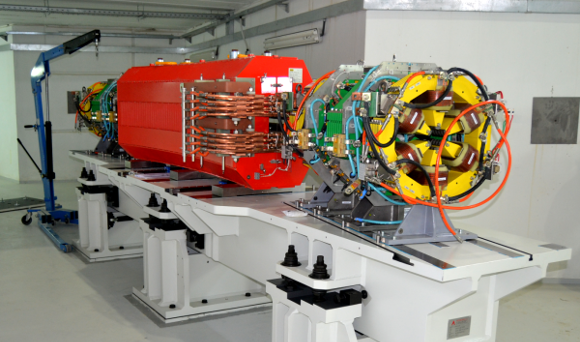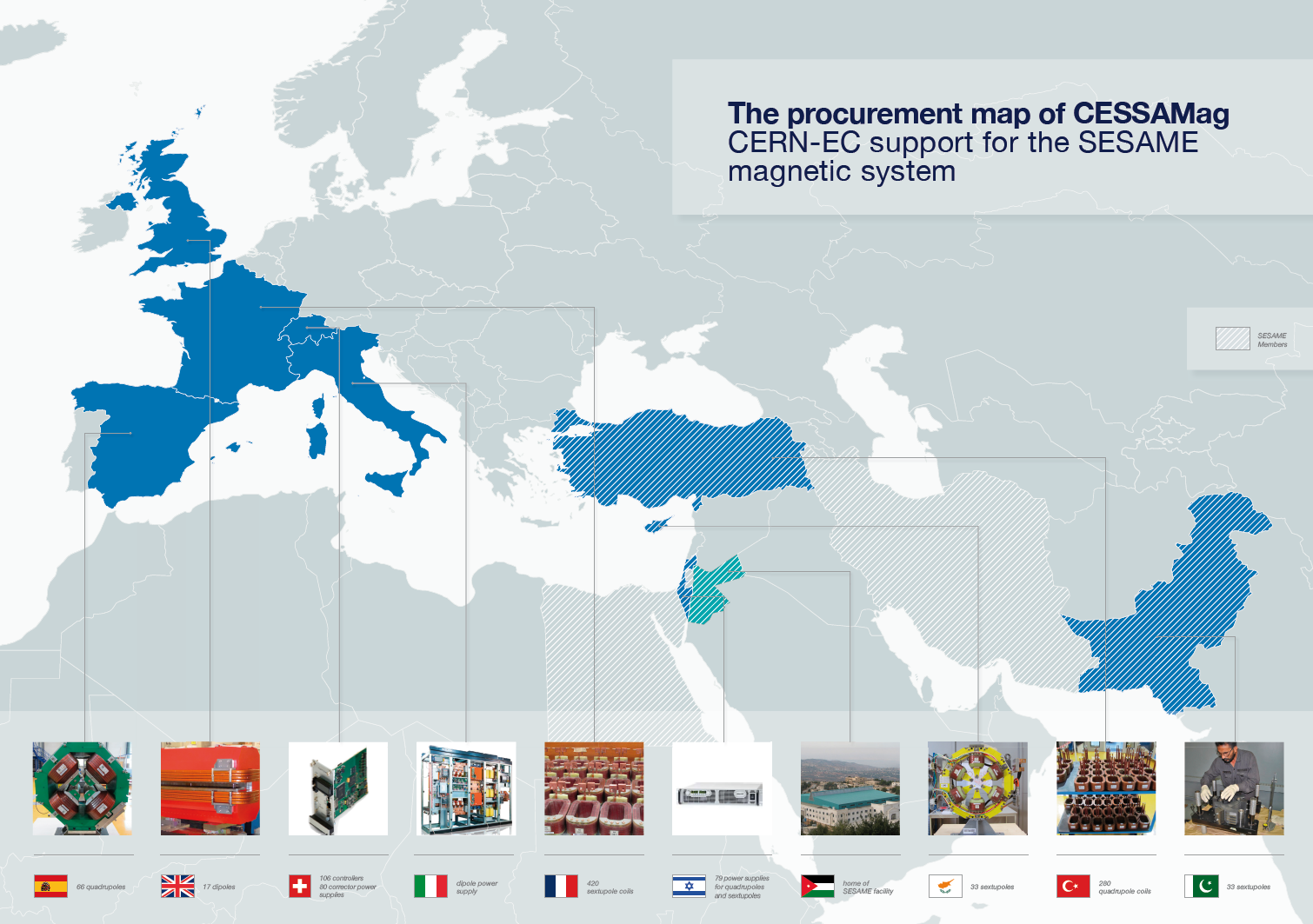 FP7 CESSAMag: building industrial relations with SESAME members
FP7 CESSAMag: building industrial relations with SESAME members
By Jean-Pierre Koutchouk & Livia Lapadatescu (CERN)
The goal of SESAME is to join forces in the Middle East and beyond, to build a synchrotron light source of excellence, attracting scientists from the region, including those already working at other such facilities in the world. In line with this international endeavour, the CERN engineers involved in the FP7 CESSAMag project in support of SESAME considered the possibility of procuring some components from companies based in the SESAME Members. Having extensive experience in carrying out quality control when buying from industry, CERN could take the challenge of procuring from companies without former accelerator experience, by providing appropriate knowledge transfer.

CESSAMag magnets being installed at SESAME. (Image credit: SESAME)
Identifying potential companies from SESAME members was, however, a challenge. In Cyprus, for example, a company was found through the Chamber of Commerce, while a Turkish company was identified at an industrial fair. Both companies had no previous experience in producing accelerator components, but, after an assessment, were found to have the potential to do it. By placing a pilot order first, CERN could test the components and ensure that they were produced at the highest standards for SESAME (all the components, in particular the magnets, were highly customized for SESAME, as is the case for most accelerators, and were not off the shelf products). In the end, the Turkish company built the quadrupole coils, while the Cyprus company assembled half of the sextupoles (33 magnets). The assembly of the other half was donated by Pakistan, who sent an expression of interest to assemble the sextupoles against a knowledge transfer from CERN. Except for the dipole, “the power supplies of the quadrupoles and sextupoles were bought from a well-established power supply company from Israel.
Another challenge in this industrial endeavour was the logistics behind the shipping of the various components, involving in particular maritime transport – to Pakistan, Cyprus and Jordan. Besides a proper conditioning of the crates to avoid damages, the various transit times, including customs clearance, had to be properly considered to meet the overall schedule.

Map of CESSAMag partners
Along with the industrial return for companies themselves (some of them now interested to participate in call for tenders with CERN or to continue producing accelerator components), the members involved have also welcomed the industrial collaboration with CERN.
The strategy chosen by CESSAMag to build industrial ties with SESAME members, in addition to purchasing accelerator components from experienced companies in Europe is yet another example of science diplomacy advanced by the project.